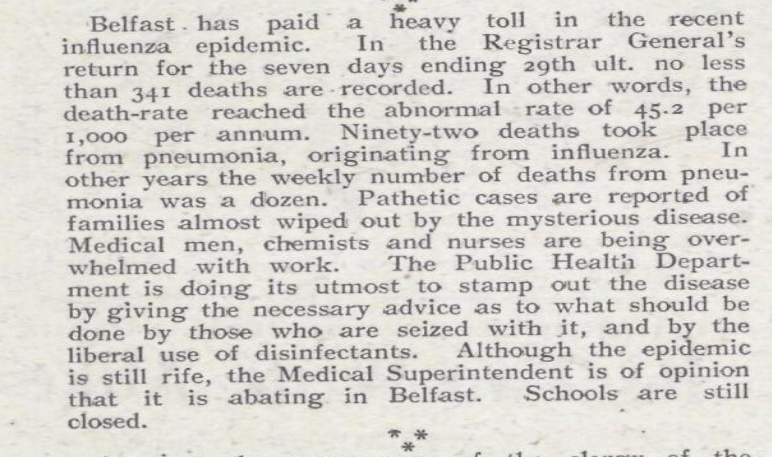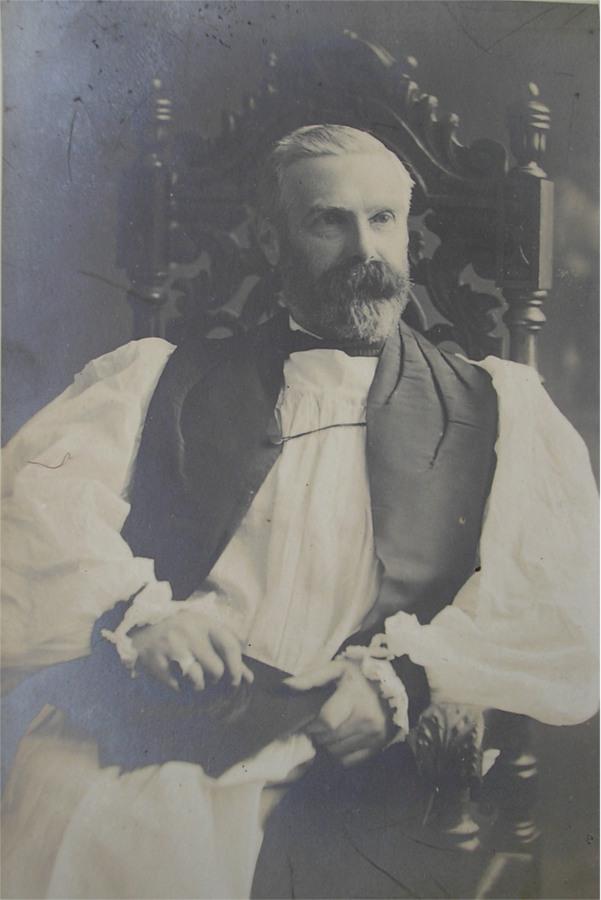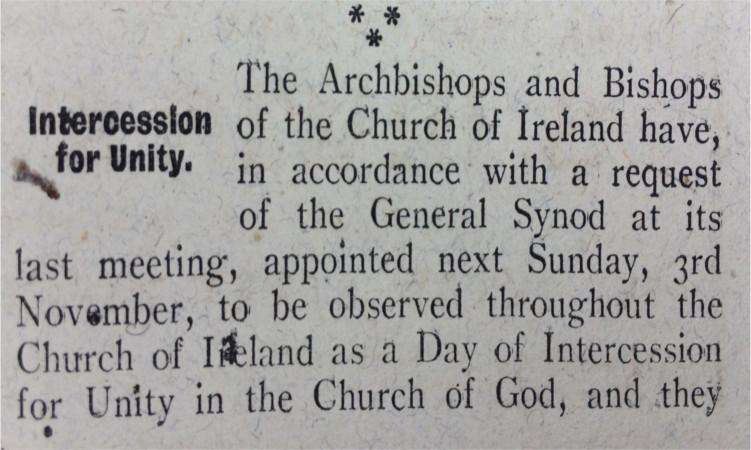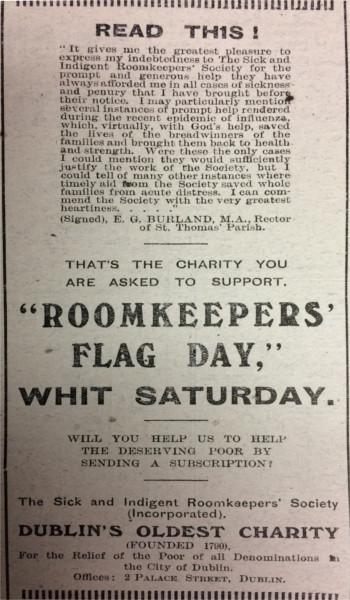Pandemic in Ireland 1918-19: reports from the Church of Ireland Gazette
The historian and writer, Dr Ida Milne, has been commissioned by the RCB Library to produce a timely analysis piece on the influenza of 1918-1919 as viewed through the lens of the Church of Ireland Gazette.
In this illustrated online presentation, Dr Milne explores how the influenza was reported by the Church of Ireland Gazette. In the early summer of 1918, the editorials appeared to be more concerned with matters political and military than religious. The hot debate in the 28th June 1918 edition, for example, was a speech during the week by Viceroy Sir John French, where he made it clear that while Lloyd George was abandoning Home Rule, conscription would press ahead if there were not 50,000 recruits to the hard-pressed army by October. The leader writer tied his colours to the mast by commenting that:
“we are not – we imagine after his recent gyrations on Irish policy few Irishmen are – among the whole hearted admirers of Mr Lloyd George.”
In the background, behind the machinations of politics and the lumbering war, a darker force was beginning to emerge: the most extensive influenza pandemic in the modern world. Elsewhere in the newspaper medical realities were beginning to dawn. In the same edition the wisdom of having laymen on standby to take services was commented upon, given the ‘suddenness with which the illness’ could seize clergymen, placing them in ‘an awkward predicament.’ On 12th July 1918, one columnist made the following stark observation:
‘Belfast has paid a heavy toll in the recent influenza epidemic. In the Registrar General’s return for the seven days ending 19th ult. no less than 341 deaths are recorded. In other words, the death-rate reached the abnormal rate of 45.2 per 1,000 per annum…’.

The highly charged political climate meant that the influenza epidemic got little more than a passing mention between May 1918 and April 1919 – a period that covers the three waves of the pandemic in Ireland. While the pandemic is recorded it is as an accepted background story – almost as though so obvious there was no need to write about it – and when writers did, it was often only in the diocesan notes, when a cleric became ill and someone had to stand in at services or church meetings.
Yet, the impact is clear enough. It threatened the life of the Primate of All Ireland, Archbishop John Crozier seen in the accompanying contemporary photograph, then from 65 years old; this detail is mentioned in passing in the Armagh notes when he is absent from a diocesan meeting.

During today’s COVID-19 pandemic, all church services have been cancelled with numbers attending funerals drastically reduced on the advice of governments in both jurisdictions. In 1918-19, the Local Government Board for Ireland responsible for the health services throughout the island, gave no such advice. From the Gazette, there seems to have been little or no discussion in the Church of Ireland of cancelling or adapting church services to curtail contagion, or advice on the best way to conduct funerals. During the peak of the second epidemic, the Archbishops asked that a Collect for Unity be used in churches on 3 November 1918, with no mention that thousands, particularly in Ulster and Leinster, are ill.


Churches and church-funded organisations played a role in social care not provided by the state. On 6 June 1919, for example, in the context of appealing for funds for the Dublin-based charity of the Sick and Indigent Roomkeepers Society, the rector of the inner-city parish of St Thomas, the Revd E.G. Burland, praised its help to him in saving the lives of many family breadwinners.
In 1918-19, most Irish people had personal experiences of infectious disease, and death from infectious disease touched most families, sometimes often, with the poorer sectors of society in bad housing worst affected. In the interim period, thanks largely to better living conditions, water and sanitation, vaccination and antibiotics, the numbers dying on the island each year have more than halved, from over 70,000 per annum to over 30,000. The current COVID-19 crisis is a timely reminder that we should not take public health measures for granted.
Digitisation of the Church of Ireland Gazette: written and read by lay and clerical members of the Church of Ireland and others, the Church of Ireland Gazette (published since 1856) provides the longest running public commentary on Church of Ireland affairs. It is a valuable primary source for understanding the complexities and nuance of Church of Ireland and wider Protestant identity, as well as the Church’s contribution to political and cultural life throughout the island. The RCB Library is undertaking a sustained project to digitize the paper, and all editions up to and including 1949 are currently available and freely searchable online at this link: https://esearch.informa.ie/rcb
Later in 2020 the Library will be enabled to digitize the remaining decades from 1950 up to 2003 (when the Gazette became available in a digital format), and make a contribution to reconciliation by presenting each decade in the context of an online exhibition thanks to funding by the Irish Government’s Reconciliation Fund through the Department of Foreign Affairs and Defence.
About the author:
Dr Milne is is a historian of disease, European history lecturer at Carlow College. She is author of Stacking the Coffins, Influenza, war and revolution in Ireland 1918-1919 (Manchester University Press, 2018) and recently co-edited (with Dr Ian d’Alton) a collection of essays entitled, Protestant and Irish: The minority’s search for place in independent Ireland (Cork University Press, 2019).